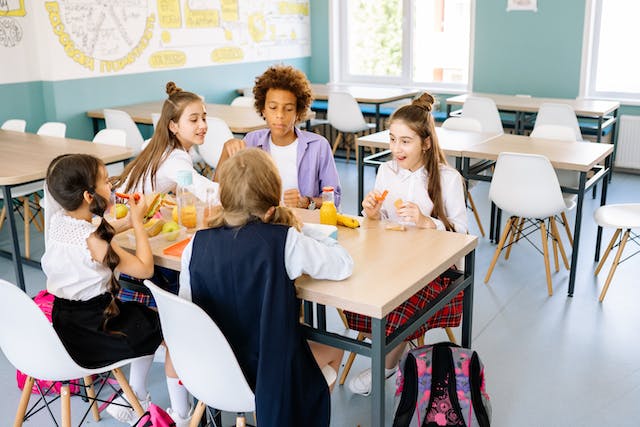Introduction:
In the realm of education, fostering a sense of belonging is pivotal to student success. As we navigate the complexities of modern education, the challenge is not only to educate but to create an environment where every student feels connected. In this article, we delve into five transformative keys that educators can utilize to reconnect students in school, cultivating a thriving and supportive academic community.
Key 1: Building Inclusive Communities
The foundation of belonging is laid through inclusivity. Schools must strive to create an environment where every student feels valued and included. This section explores strategies for promoting inclusivity, from diverse representation in curricula to fostering a culture that celebrates individual differences.
Inclusive communities are built on the principle that diversity is an asset, not a hindrance. By integrating a range of perspectives and experiences, schools become spaces where students see themselves reflected and appreciated. This key emphasizes the importance of proactive efforts to break down barriers and create a sense of unity among students.
Inclusion starts with representation. Students should encounter a curriculum that reflects their backgrounds and experiences. It’s crucial to showcase a diverse range of voices in textbooks, literature, and historical narratives. This not only validates the identities of students but also educates the entire school community about the richness of diversity.
Beyond the curriculum, fostering a culture of inclusivity involves promoting open dialogue. Schools can organize events that celebrate different cultures, inviting students to share their traditions and stories. This not only broadens everyone’s understanding but also establishes an environment where differences are celebrated rather than marginalized.
Key 2: Nurturing Positive Teacher-Student Relationships
The teacher-student relationship is a cornerstone of belonging. This section explores the significance of fostering positive connections between educators and students. Strategies such as active listening, mentorship programs, and personalized feedback are examined to highlight their impact on student engagement and emotional well-being.
Positive teacher-student relationships go beyond the classroom. When students feel seen, heard, and supported, they are more likely to actively participate in their education. This key delves into practical approaches that educators can adopt to create a supportive atmosphere that encourages open communication and mutual respect.
Active listening is a fundamental aspect of nurturing positive relationships. Educators can create a space where students feel comfortable expressing their thoughts and concerns. This involves not only hearing but truly understanding the individual needs of each student. In addition, mentorship programs provide students with a reliable source of guidance and support, fostering a sense of trust and connection.
Personalized feedback plays a crucial role in recognizing and celebrating each student’s strengths. When educators take the time to provide constructive and specific feedback, students feel acknowledged and motivated to continue their efforts. This key underscores the importance of genuine, positive interactions that extend beyond traditional academic assessments.

Key 3: Empowering Student Voice and Agency
Students thrive when they have a sense of agency over their educational experience. This section explores the importance of empowering student voice and involving them in decision-making processes. Strategies such as student councils, collaborative projects, and forums for expression are discussed to highlight their role in creating a sense of ownership among students.
Empowering student voice involves creating avenues for active participation. Student councils, for example, can be platforms where students contribute to decision-making processes within the school. By involving students in choices that directly impact them, educators convey the message that their opinions are not only valued but integral to the school’s functioning.
Collaborative projects are another effective way to foster a sense of agency. Students can be given opportunities to initiate and lead projects that align with their interests and passions. This not only promotes autonomy but also encourages teamwork and the exchange of ideas among peers.
Forums for expression, such as creative writing platforms, art exhibits, or public speaking events, provide spaces where students can share their thoughts and experiences. This not only enhances communication skills but also reinforces the understanding that each student’s voice matters in shaping the school community.
Key 4: Implementing Social and Emotional Learning (SEL) Programs
Social and Emotional Learning (SEL) programs play a pivotal role in fostering a sense of belonging. This section explores the benefits of integrating SEL into the curriculum, addressing emotional intelligence, conflict resolution, and interpersonal skills. Practical examples and success stories illustrate the positive impact of SEL on creating a more supportive and connected school community.
SEL programs equip students with the tools to navigate their emotions, communicate effectively, and build healthy relationships. By integrating these programs into the school curriculum, educators can contribute to the overall well-being of students, creating an environment where emotional intelligence is valued as much as academic achievement.
Addressing emotional intelligence within the curriculum involves creating dedicated spaces for students to explore and understand their feelings. SEL programs can incorporate activities that promote self-awareness, self-regulation, and empathy. By fostering emotional intelligence, schools empower students to navigate challenges with resilience and communicate effectively with their peers.
Conflict resolution is another vital aspect of SEL. Teaching students constructive ways to resolve conflicts promotes a positive and respectful environment. When students possess the skills to navigate disagreements, they contribute to a harmonious school community where differences are addressed with understanding and compassion.
Key 5: Establishing Peer Support Networks
Peers are a powerful influence on students’ sense of belonging. This section delves into the significance of establishing peer support networks within schools. Strategies such as mentorship programs, peer tutoring, and collaborative learning initiatives are explored to highlight their role in creating a supportive community where students can lean on each other for academic and emotional support.
Peer support networks foster a sense of camaraderie and connection. When students feel supported by their peers, the school transforms into a community where everyone has a role to play in each other’s success. This key emphasizes the importance of intentionally creating spaces for positive peer interactions to flourish.
Mentorship programs that pair older students with younger ones create a sense of responsibility and support within the student body. Through these programs, students not only receive academic guidance but also benefit from the wisdom and experience of their peers. This creates a culture where students are invested in each other’s well-being.
Peer tutoring initiatives contribute to a collaborative learning environment. When students have the opportunity to teach and learn from each other, it enhances academic performance and creates a supportive academic community. Collaborative learning initiatives, such as group projects or study groups, provide spaces where students can actively engage with their peers, fostering a sense of belonging and shared achievement.
Conclusion:
In conclusion, the keys to reconnecting students in school are multifaceted, emphasizing the need for a holistic approach to education. From building inclusive communities and nurturing positive teacher-student relationships to empowering student voice and implementing Social and Emotional Learning programs, each key contributes to creating an environment where every student feels a sense of belonging.
Educators play a crucial role in implementing these strategies, fostering an atmosphere that goes beyond academic achievement to prioritize the overall well-being of students. As schools embrace these transformative keys, they pave the way for a thriving academic community where students not only excel academically but also find joy, support, and a genuine sense of belonging in their educational journey.












